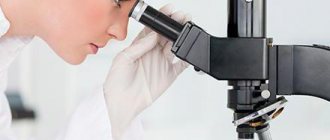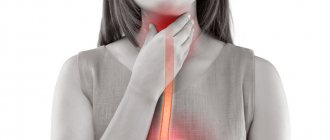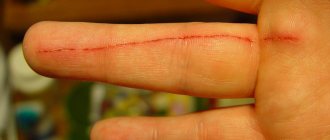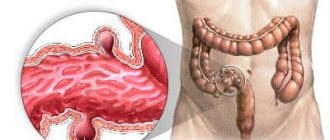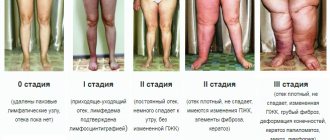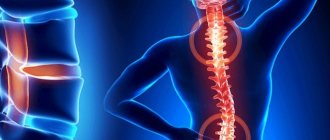Consultation with a neurologist – RUB 1,750.
- What is Raynaud's syndrome?
- Causes and risk factors
- Signs of Raynaud's disease
- Diagnostics
- Treatment of Raynaud's phenomenon
- Prevention
- Popular questions
Raynaud's disease (syndrome, phenomenon) is an episode of transient digital ischemia due to vasoconstriction of the digital arteries, precapillary arterioles and cutaneous arteriovenous shunts under the influence of cold temperature and emotional stress. With this pathology, the arterial blood supply to the hands and/or feet is disrupted.
The disease is paroxysmal in nature and usually affects symmetrical limbs. The peculiarity of the vascular reaction is that it is inadequate to the stimulus, and over time it clinically only worsens Source: Alekperov R.T. Sildenafil in the treatment of Raynaud's syndrome / R.T. Alekperov // Scientific and practical rheumatology. - 2009. - No. 48 (3). — P. 38-45. .
In different countries, the prevalence of SR ranges from 2.1 to 16.8%. In countries with relatively cold climates, the incidence of CP is significantly higher than in countries with warmer climates. The peak incidence occurs at the age of 20-30 years. Among the patients, women predominate Source: Alekperov R.T. Raynaud's syndrome in the practice of a rheumatologist / R.T. Alekperov // Modern rheumatology. - 2014. - No. 2. - P. 37-46. .
Danilova Olga Andreevna
neurologist
Raynaud's disease is manifested by episodes of ischemia (circulatory failure) of the final parts of the upper extremities, which develop as a result of vascular spasm. Attacks develop when exposed to cold or stress. The main group of patients are young women. The disease is treated with conservative (vasodilator drugs) and surgical methods (sympathectomy). The operation is performed only if attacks of Raynaud's disease are too frequent, reduce the patient's quality of life, and lead to the formation of trophic ulcers on the hands.
Raynaud's disease
Raynaud's disease (or phenomenon) is a rare disease of the arteries and arterioles of the extremities.
It occurs in approximately 5% of the world's population, mainly in women aged 25–35 years. It is characterized by vasospastic (spontaneous) contraction of the walls of blood vessels, which causes circulatory disorders and contributes to the formation of a bloodless area, i.e. ischemia. With prolonged vasospasm of the arteries, Raynaud's disease is manifested by a change in the color of the tissues of the arms and/or legs (less commonly, the ears, tip of the nose, chin) - this is the main symptom of the disease. The lesion is symmetrical and bilateral. Raynaud's syndrome should be highlighted separately. Unlike the disease, it always occurs as a complication of other vascular, endocrine or autoimmune diseases, often against the background of chronic scleroderma. It is characterized by an asymmetric manifestation of vasospasm and late development of specific symptoms.
Laboratory research
5) Laboratory tests: complete blood count (CBC), general urinalysis (UCA), biochemical blood tests (blood bozimia), hematology and hemostasis, urine biochemistry.
The diagnosis is made when a number of signs are present:
1) most often damage is observed to the extremities, arms and legs, less often to the extremities of the nose, mouth, ears;
2) the presence of triphasic attacks with pallor, then cynosis and hyperthermia, sometimes attacks are biphasic with pallor and/or cyanosis and then hyperthermia;
3) the presence of a provoking factor: exposure to cold, negative emotions, trauma.
Possible reasons
The etiology has not been reliably established. The basis is probably a genetic predisposition.
The onset of the disease is provoked by the following risk factors:
- frequent and prolonged cases of hypothermia;
- frequent limb injuries;
- severe emotional stress.
Occupational factors and meteorological influences are of particular importance in the pathogenesis of Raynaud's disease, therefore the risk group includes:
- people living in damp and cold climates;
- chemical production employees;
- representatives of working professions (exposure to vibration, intense physical activity): timber harvesters, miners, milkmaids, etc.;
- pianists, typists (chronic overstrain of hands and fingers), etc.
What causes Raynaud's phenomenon (primary secondary)
Raynaud's phenomenon usually occurs due to exposure to cold and psychological stress
Raynaud's phenomenon usually occurs due to exposure to cold and psychological stress associated with strong emotions. These factors are triggers, not causes, of Raynaud's phenomenon. Typically, vasoconstriction occurs when exposed to cold and stress, but with Raynaud's phenomenon the reaction is exaggerated.
The exact cause of primary Raynaud's phenomenon is unknown . It is called functional peripheral arterial disease because it is not associated with any disease (pathology) but is not a normal physiological response to various factors that can cause mild to moderate vasoconstriction. Although there is no known cause, there are certain aggravating factors such as cigarette smoking and regular consumption of caffeinated drinks.
Secondary Raynaud's phenomenon occurs due to various underlying diseases and disorders . These causes may include atherosclerosis, Buerger's disease, carpal tunnel syndrome, cocaine use, frostbite, and overuse injury to the affected area.
Secondary Raynaud's phenomenon can occur due to medications - amphetamines, beta-blockers, anti-cancer drugs (chemotherapy), ergotamine, methysergide, drugs containing pseudoephedrine.
Secondary Raynaud's phenomenon can occur due to underlying diseases - rheumatoid arthritis (RA), scleroderma, Sjögren's syndrome, systemic lupus erythematosus (SLE), thoracic outlet syndrome, thyroid dysfunction, vasculitis.
Symptoms of Raynaud's disease
There are three stages of Raynaud's disease:
- The first stage is characterized by a significant increase in the tone of the vascular walls, which causes a short-term spasm of the arteries. In response to cold or stress, the skin turns pale and an acute attack of pain occurs. After the negative factor ceases, the signs of Raynaud's disease disappear, the color of the hands and/or feet acquires a natural shade.
- The second stage is characterized by the addition to the symptoms described above of swelling and numbness of the extremities, cyanosis and marbled skin color. The pain in stage 2 Raynaud's disease is intense and burning. Increases sensitivity to exposure to cold.
- At the third stage, pain and bluishness of the skin are observed constantly. Trophic disorders appear in the form of ulcers on the fingertips and the formation of necrotic areas. Such wounds are difficult to treat because blood circulation in the limbs is impaired. This is fraught with the development of secondary infection and even sepsis. There is intolerance to low temperatures.
Amen's test
1) Amen's test to detect occlusion of the branches of the radial artery or ulnar artery distal to the wrist. The patient clenches his fist to force the blood out of the hand. The doctor clamps the ulnar and radial arteries. The patient unclenches his fist, the hand remains pale. The doctor stops compressing the radial artery while continuing to compress the ulnar artery. If the radial artery distal to the site of clamping is patent, the hand quickly turns pink. If the patency of the radial artery is impaired, the hand remains pale. The patency of the distal branches of the ulnar artery is examined in the same way.
Diagnostics
A preliminary diagnosis is established based on the patient's complaints. To confirm it, the following criteria are assessed:
- degree of circulatory impairment;
- symmetry of vasospasms;
- duration of symptoms characteristic of Raynaud's disease.
The following diagnostic methods are carried out: cold tests to study the reaction of the extremities to low temperatures and capillaroscopy to assess the degree of changes in the arteries of the extremities.
With the final conclusion, the doctor’s main task is to differentiate Raynaud’s disease from Raynaud’s syndrome, which can be a symptom of more than 50 different diseases.
Prevention
To prevent Raynaud's disease, medical experts recommend using contrast baths to train blood vessels. It is also necessary to eat properly and nutritiously, and not to overuse coffee, as it constricts blood vessels.
Avoid overheating; in cold weather, always wear gloves and dress appropriately for the weather.
Raynaud's disease should only be treated under the supervision of a qualified physician. You can get quality medical care in.
Treatment methods
The stage affects how Raynaud's disease is treated.
At stages I and II, conservative methods are prescribed. First of all, it is necessary to eliminate the factors that provoke the attack: cold, emotional overload, occupational hazards. In this regard, clinical recommendations for Raynaud's disease include a categorical cessation of smoking (nicotine increases arterial tone), normalization of the emotional background, exclusion of hypothermia and limb injuries, as well as a change of job if it is associated, for example, with vibrations or excessive physical exertion.
An attack of vasospasm should be relieved by warming the extremities. Warm baths, wrapping, and massage of the affected area are suitable for this.
Drugs for Raynaud's disease include vasodilators (for example, phentolamine) - they improve blood circulation and prevent spasms. In case of ulcers and necrosis, local wound healing ointments are used.
Drug treatment can last for years until the vasodilators no longer provide the desired effect. In this case, a sympathectomy is performed - a surgical intervention in which the nerve fibers that cause vascular spasm are stopped or removed. Necrosis requires necrectomy.
Auxiliary therapeutic methods: plasmapheresis sessions, reflexology, physiotherapy, hyperbaric oxygenation, psychotherapy.
How to completely cure Raynaud's disease is unknown, since the exact cause of the disease has not been established. But if you follow the doctor’s recommendations, the prognosis is favorable. There are cases when attacks of vasospasms suddenly disappeared after changing profession or moving to another climate zone.
What are the symptoms of Rhine phenomenon?
The skin over the affected area becomes pale.
Raynaud's phenomenon occurs in the form of repeated attacks of vasospam, which can last from several minutes to even hours. The symptoms that occur with Raynaud's phenomenon are reversible. In some severe episodes, which are rare, it can cause damage to the affected tissue by cutting off the blood supply.
This tissue damage is known as ischemia. In cases where it is very severe, long lasting or recurrent over short periods, it can even progress to the formation of open ulcers.
Symptom of skin discoloration due to Rhine phenomenon
The skin over the affected area becomes pale as blood in the superficial arterioles and capillaries determines the color of the skin. As the condition worsens, oxygen supply to the affected area is severely hampered and this manifests as blue discoloration (cyanosis). Once the attack stops, blood rushes to the affected area to restore oxygen supply and turns red (hyperemia).
Symptom numbness tingling and pain with Rhine phenomenon
Decreased blood flow also reduces sensation in the affected area. It initially feels like a tingling sensation and eventually the area will become numb. In very rare cases, complete numbness may occur, meaning complete loss of sensation. When blood flow returns after an attack, patients report a burning or tingling sensation. The pain may persist long after the attack when there is ulceration.
Symptom of change in body temperature with Rhine phenomenon
Skin temperature is determined by the amount of blood flowing to the area and the ambient temperature. Because Raynaud's phenomenon dramatically reduces blood flow, the skin becomes noticeably cool to the touch and temperature measurements are lower than those of surrounding unaffected skin.
Official website of Valery Nikolaevich Fokin
Raynaud's disease
Raynaud's disease (Raynaud's phenomenon) is a condition that results in a disturbance in the coloring of the fingers and/or toes due to sudden changes in temperature (cold or hot) or emotional events. The discoloration occurs as a result of a pathological spasm of blood vessels, as a result of which a limited amount of blood is delivered to the tissues. At the beginning, the fingers hurt precisely because a very small amount of blood flows to the tissues. Then the fingers turn blue due to lack of oxygen. Eventually, the blood vessels open again, causing a strong rush of blood and the fingers turn red. This three-color sequence (white-blue-red), which occurs in most cases due to cold weather, is Raynaud's phenomenon.
Most often, this phenomenon occurs in women, especially in the second, third, and fourth decades of life. People can suffer from this phenomenon alone or in combination with other rheumatic diseases. When such a phenomenon occurs alone, it is usually called simply "Raynaud's phenomenon", or "initial Raynaud's phenomenon". If the phenomenon occurs along with other diseases, it is most often called a “secondary phenomenon.”
THE REASONS FOR THE APPEARANCE OF THE PRIMARY AND SECONDARY PHENOMENON ARE UNKNOWN.
Factors such as pathological disturbance of nerve control over blood vessels and pathological nervous excitability at cold temperatures can be considered as conditions due to which this phenomenon occurs. Signs of discoloration of the fingers are partly caused by the fact that the blood vessels narrow, due to spasms in the tiny muscles of the vessel walls, which then tend to suddenly dilate. Small arteries located in the tissues of the fingers have a microscopic thickening inside, which also leads to pathological narrowing of the blood vessels.
SYMPTOMS OF RAYNAUD'S PHENOMENON
depend on the severity, frequency and duration of spasms of blood vessels. Many patients with a mild form of the disease notice only a slight change in skin color as a reaction to cold air temperature. Such patients may experience a slight tingling and numbness in the area of the fingers. The numbness and tingling will go away as soon as the coloring of the fingers returns to normal. Once the spasms of the blood vessels become longer, the sensory nerves become irritated due to lack of oxygen and this can cause pain in the affected areas of the fingers. Rarely, insufficient oxygen supply to tissues can cause finger ulceration. Ulcerations on the fingers may be associated with infection. If the lack of oxygen continues, it can lead to gangrene. Raynaud's phenomenon can also affect areas of the body such as the nose, ears and tongue. Ulcers rarely appear in these areas of the body, but numbness and pain may occur.
For patients with a characteristic sequence of color changes on the skin of the fingers, identified as a reaction to cold air temperature, it is not difficult to predict the phenomenon. Sometimes, by certain patterns of capillaries of blood vessels that are adjacent to the nail plates, Raynaud's phenomenon can be determined. There is no blood test that would help a doctor clarify and verify his diagnosis. The doctor may recommend certain blood tests to rule out rheumatic diseases and thyroid pathologies.
HOW IS RAYNAUD'S PHENOMENON TREATED?
To avoid getting Raynaud's disease, you need to protect your fingers and toes from cold, injury and infection. Medicines can only make the situation worse, causing even greater spasm of the blood vessels, so patients with Raynaud's phenomenon should avoid taking medications. For those patients whose symptoms are persistent, only those medications that dilate the walls of blood vessels can be prescribed. For patients who have no other symptoms other than discoloration, steps can be taken to prevent other complications. Regardless of the severity of the disease, measures to prevent complications should be taken in both the primary and secondary stages of the disease. The best remedy is to keep your feet and hands warm to prevent hypothermia. Dishes must be washed using rubber gloves. Don't go barefoot. Compressive bandages, rings and shoes are absolutely not advisable.
Patients should protect their arms and legs from injury and wounds. Any wounds or infections should be treated immediately to prevent complications. You should also avoid emotional stress.
Both active and passive smoking should be avoided, because the chemicals contained in tobacco constrict blood vessels and lead to hardening of the arteries, which can subsequently lead to a lack of oxygen supply to the tissues. Pedicures and manicures must be done carefully so as not to damage your fingers or cause any infection. Ointments that help open blood vessels (nitroglycerin ointment) are sometimes applied to both surfaces of the fingers that are most damaged in order to increase blood flow and speed up recovery.
Medicines that can worsen the symptoms of Raynaud's phenomenon by causing blood vessel spasms include cold and weight loss medications. Medicines used to treat high blood pressure and heart disease can also make the disease worse. Patients with persistent, painful symptoms may benefit from oral medications that dilate the walls of blood vessels.
For some patients with persistent symptoms, a medicine called Trental may be prescribed to help improve blood circulation.
In acute Raynaud's phenomenon, gangrene may occur with subsequent loss of fingers. In rare, very complex cases of this disease, a surgical procedure called a sympathectomy may be required. To prevent further spasms of the blood vessels, the sympathetic nerves are surgically removed. Usually the operation is performed on the fingers of both hands. Small cuts are made into the blood vessels in the fingers and tiny nerves are removed. This procedure is called digital sympathectomy.
If the upper extremities are affected, the following types of exposure are included.
- Classic massage: Upper back massage.
- Upper limb massage.
1st option:
V11 (Th1 – Th2) ± 1.5 cun
V15 (Th5 – Th6) ± 1.5 cun
GI5 (on the radial side of the dorsum of the hand, in)
MS6 (2 cun above the proximal wrist fold, in the middle of the flexor fold)
P9 (between the proximal and distal radiocarpal folds, on the radial artery)
MC8 (in the center of the palm between the 2nd and 3rd metacarpal bones)
GI11 (midway between the lateral epicondyle of the humerus and the radial end of the elbow crease)
GI4 (in the middle of the protruding part of the first dorsal interosseous muscle with the thumb attached)
2nd option:
V11 (Th1 – Th2) ± 1.5 cun
V15 (Th5 – Th6) ± 1.5 cun
V23 (L2 – L3) ± 1.5 cun
VG14 (between the spinous processes of the 7th cervical and 1st thoracic vertebrae)
MS6 (2 cun above the proximal wrist fold, in the middle of the flexor fold)
C7 (on the proximal radiocarpal fold, in the gap between the pisiform and ulna bones)
GI11 (midway between the lateral epicondyle of the humerus and the radial end of the elbow crease)
TR5 (on the dorsum of the forearm, 2 cun above the proximal wrist fold)
GI4 (in the middle of the protruding part of the first dorsal interosseous muscle with the thumb attached)
P1 (in the clavipectoral triangle, between the 1st and 2nd ribs, 1 cun below the lower edge of the clavicle, in the recess between the deltoid muscle and the pectoralis major)
When the lower extremities are affected, the following types of influence are used.
- Classic massage. Massage of the lumbar region.
- Massage of the pelvic area.
- Massage of the lower extremities according to generally accepted methods.
V40 (in the center of the popliteal fossa, at the lateral side of the popliteal artery)
V57 (in the center of the back of the leg, 7 cun below the middle of the popliteal fossa)
VB39 (3 cun above the center of the lateral malleolus, at the anterior edge of the fibula)
V60 (in the depression midway between the center of the lateral malleolus and the calcaneal tendon)
P 9 (between the proximal and distal radiocarpal folds, on the radial artery)
E36 (3 cun below the lower edge of the patella and the width of the middle finger lateral to the anterior edge of the tibia)
VB34 (on the lateral side of the tibia, in the depression at the anterior inferior edge of the head of the fibula, 2 cun below the lower edge of the patella)
F5 (on the inner surface of the tibia, 5 cun above the center of the medial malleolus, at the posterior edge of the tibia)
F4 (anterior and lateral to the medial malleolus, in the depression above the tubercle of the scaphoid)
F2 (in the depression anterior to the space between the 1st and 2nd metatarsophalangeal joints, 0.5 cun proximal to the border of the skin membrane between the 1st and 2nd fingers)
VB43 (0.5 cun proximal to the edge of the skin fold between the 4th and 5th toes)
E44 (in the gap between the 2nd and 3rd toes, in the cavity distal to the 2nd and 3rd metatarsal joints)
RP4 (on the inside of the foot, in the depression at the anterior inferior edge of the base of the first metatarsal bone)
The course of treatment is 12 sessions.
© Doctor of Pedagogy, Professor V.N. Fokin, 2009—2015
Raynaud's syndrome in men
If the signs are ignored and there is no treatment, Raynaud's syndrome progresses. During attacks, men and women experience common symptoms:
- pain syndrome, the development of which is preceded by insufficient blood supply to tissues and metabolic disorders;
- blanching of the skin is noted in the first minutes after the action of the provoking factor. Pale skin is associated with a sharp spasm of blood vessels and impaired blood circulation;
- a feeling of numbness and tingling that disappears after normalization of blood circulation;
- cyanosis of the skin appears after a pale color, which is explained by stagnation and blood filling of the veins;
- redness of the skin is caused by blood flow to the vessels that have experienced spasm.
Raynaud's syndrome, symptoms and treatment are similar in women and men, can develop with autoimmune rheumatic diseases. Rheumatologists at the Yusupov Hospital Therapy Clinic are engaged in scientific activities and study world experience in the treatment of Raynaud's syndrome.
ADDITIONAL INFORMATION
Source of financing. The preparation and publication of the manuscript was carried out at the personal expense of the team of authors.
Conflict of interest. The authors declare no conflict of interest during the writing of this article.
Authors' participation. All authors made significant contributions to the search and analytical work and preparation of the article, read and approved the final version before publication.
Patient consent. The patient voluntarily signed informed consent for the publication of personal medical information in anonymized form in the journal Obesity and Metabolism.
